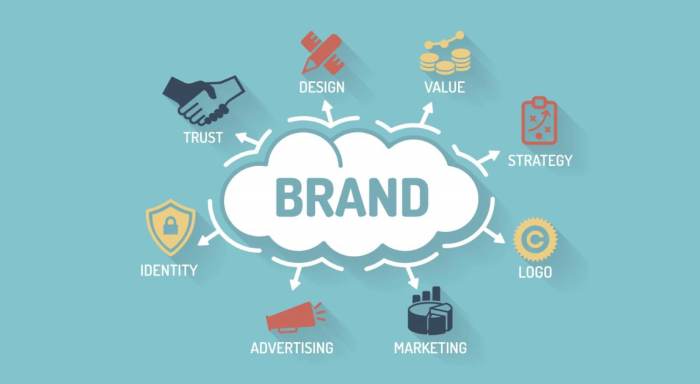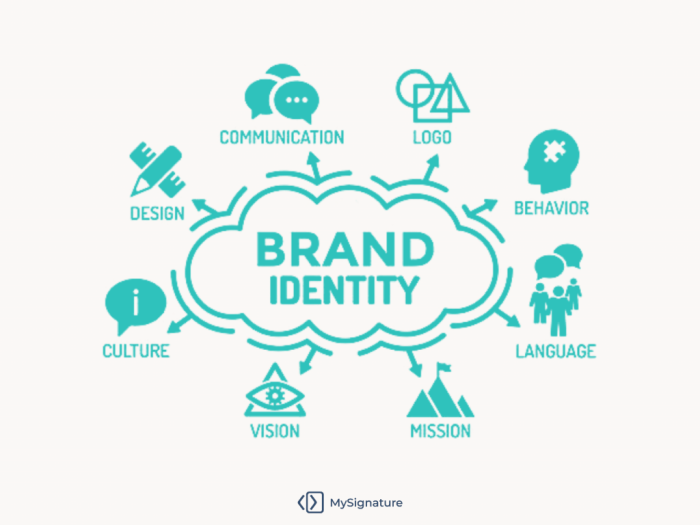Brand Identity Building is all about crafting a unique image that sets your business apart from the rest. Dive into the world of logos, colors, and messaging as we explore the key elements that shape a brand’s identity.
Importance of Brand Identity Building
Building a strong brand identity is essential for businesses to stand out in a crowded marketplace. It helps to create a unique image and personality for a company, making it easily recognizable and memorable to customers.
Differentiation from Competitors
A well-defined brand identity sets a company apart from its competitors by highlighting what makes it special and why customers should choose it over others. This differentiation can be based on factors such as quality, values, and customer experience.
Establishing Trust with Customers
Brand identity plays a crucial role in establishing trust with customers. A consistent and cohesive brand image conveys professionalism, reliability, and authenticity, which are key factors in building long-lasting relationships with consumers.
Elements of Brand Identity
Building a strong brand identity involves several key elements that work together to create a distinctive image for a company or product. These elements include logos, colors, typography, brand messaging, and values.
Logos
Logos are one of the most recognizable elements of brand identity. They are symbols or designs that represent a company and are often the first thing consumers associate with a brand. Logos help to create a visual identity that sets a brand apart from its competitors.
Colors
Colors play a crucial role in brand identity as they evoke emotions and perceptions. Different colors can convey different meanings and messages to consumers. Consistent use of colors across all brand materials helps to establish brand recognition and create a cohesive brand image.
Typography
Typography refers to the style and appearance of text used by a brand. The choice of fonts, sizes, and spacing can impact how a brand is perceived by consumers. Typography helps to communicate the brand’s personality and values through written content.
Brand Messaging and Values
Brand messaging involves the language and tone used in communication with customers. It includes slogans, taglines, and brand voice that reflect the brand’s personality and values. Consistent messaging helps to build brand awareness and loyalty among consumers.
Creating a Strong Brand Identity

Building a strong brand identity requires careful planning and execution to ensure consistency and resonance with the target audience.
Strategies for Creating a Cohesive Brand Identity
- Define your brand values and mission statement to guide all branding decisions.
- Create a unique brand voice and tone that reflects your brand personality.
- Design a memorable logo and visual assets that are easily recognizable.
- Develop brand guidelines to maintain consistency across all touchpoints.
Consistency Across All Brand Touchpoints
Consistency is key in strengthening brand identity as it helps build trust and recognition among consumers. Whether it’s your website, social media, packaging, or customer service, maintaining a consistent brand voice, design elements, and messaging reinforces your brand’s image and values.
Understanding Target Audience Preferences, Brand Identity Building
To create a brand identity that resonates with your target audience, it’s crucial to understand their preferences, behaviors, and needs. Conduct market research, gather feedback, and analyze consumer data to tailor your branding strategies to align with what your audience values and connects with. By knowing your audience inside and out, you can craft a brand identity that speaks directly to them and builds a loyal following.
Brand Identity Evolution

In the ever-changing landscape of business and consumer preferences, brands must evolve their identity to stay relevant and resonate with their target audience. This evolution process involves maintaining core values while adapting to new trends and market demands.
Successful Brand Identity Revamps
- Apple: The tech giant successfully revamped its brand identity from a niche computer company to a global leader in innovation. By focusing on simplicity, design, and user experience, Apple maintained its core values while appealing to a broader audience.
- Starbucks: The coffee chain underwent a brand identity revamp by repositioning itself as a premium coffee experience rather than just a place to grab a quick cup of coffee. This shift helped Starbucks attract a more upscale clientele while retaining loyal customers.
Risks and Benefits of Rebranding
- Risks: Rebranding can alienate existing customers who were loyal to the old brand identity, leading to a loss of market share. It can also be costly and time-consuming to implement, with no guarantee of success.
- Benefits: Rebranding can help companies stay relevant in a competitive market, attract new customers, and differentiate themselves from competitors. It can also breathe new life into a stagnant brand and generate buzz and excitement among consumers.





